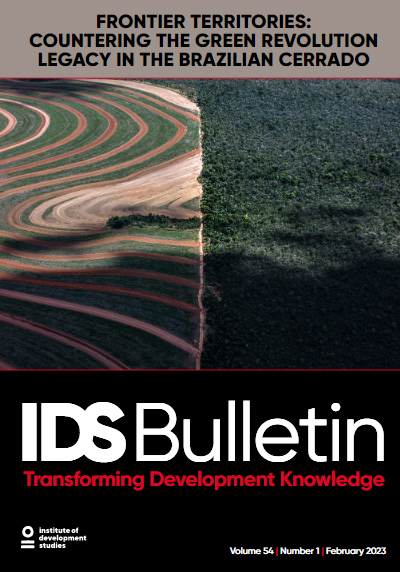Frontier Territories: Countering the Green Revolution Legacy in the Brazilian Cerrado

Brazil is recognised as a world leader in the production of agri-food commodities in large, highly mechanised farms, but also as a centre of resistance movements advocating for land rights and food sovereignty. Brazil’s portrayal as a success story of agricultural modernisation is invariably linked to the expansion of the production frontier and, specifically, the conversion of the Cerrado region into industrial farmland.
A vast savannah zone in the centre of the country, the transformation of the Cerrado region has been driven by intensive soybean and livestock production for export. However, the Cerrado ‘miracle’ has come at a high cost. Besides the environmental impacts of land clearance and the removal of native vegetation, the expansion of the frontier has exacerbated poverty and injustice, deepening the historical inequality of land distribution and wealth.
This issue of the IDS Bulletin highlights the legacy of tensions in the Cerrado, arguing that this legacy cannot be ignored in debates on global agri-food systems to which the region is increasingly central. Authored mainly by early career scholars from Brazilian and British universities, the papers here offer new research and empirical material on the battles that have engulfed people and nature in the Cerrado. Three themes emerge: the logic of extraction in an agricultural frontier; the grabbing of natural resources in the name of sustainability; and conflicts and resistance movements.
This IDS Bulletin concludes with an agenda for research and action to reclaim the Cerrado, alongside other agricultural frontier territories across the world, as part of the global effort towards sustainable transformation of agri-food systems to secure justice for nature and people alike.

